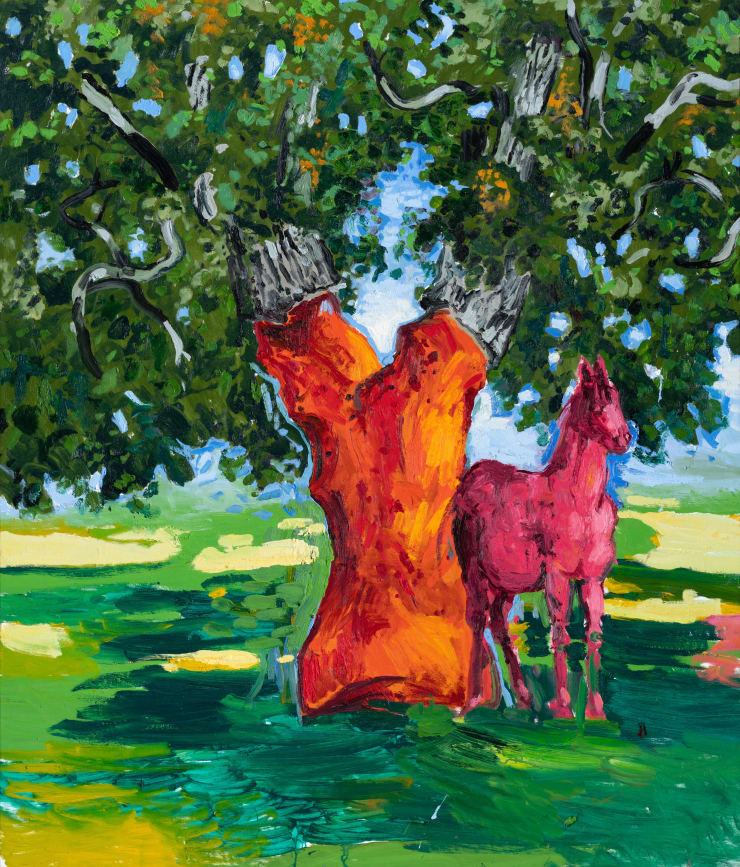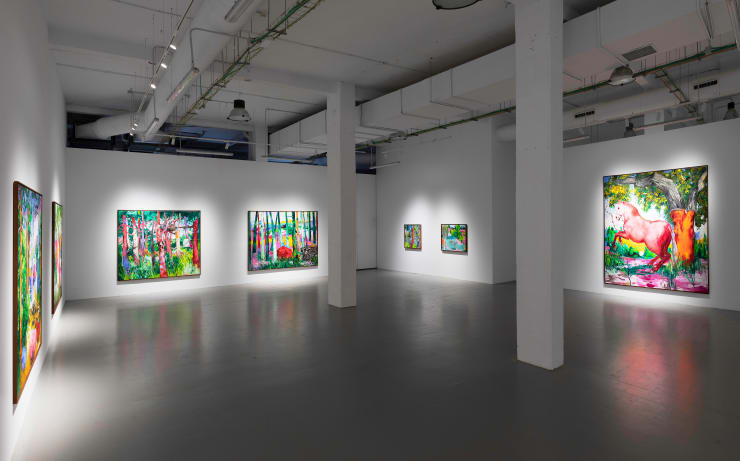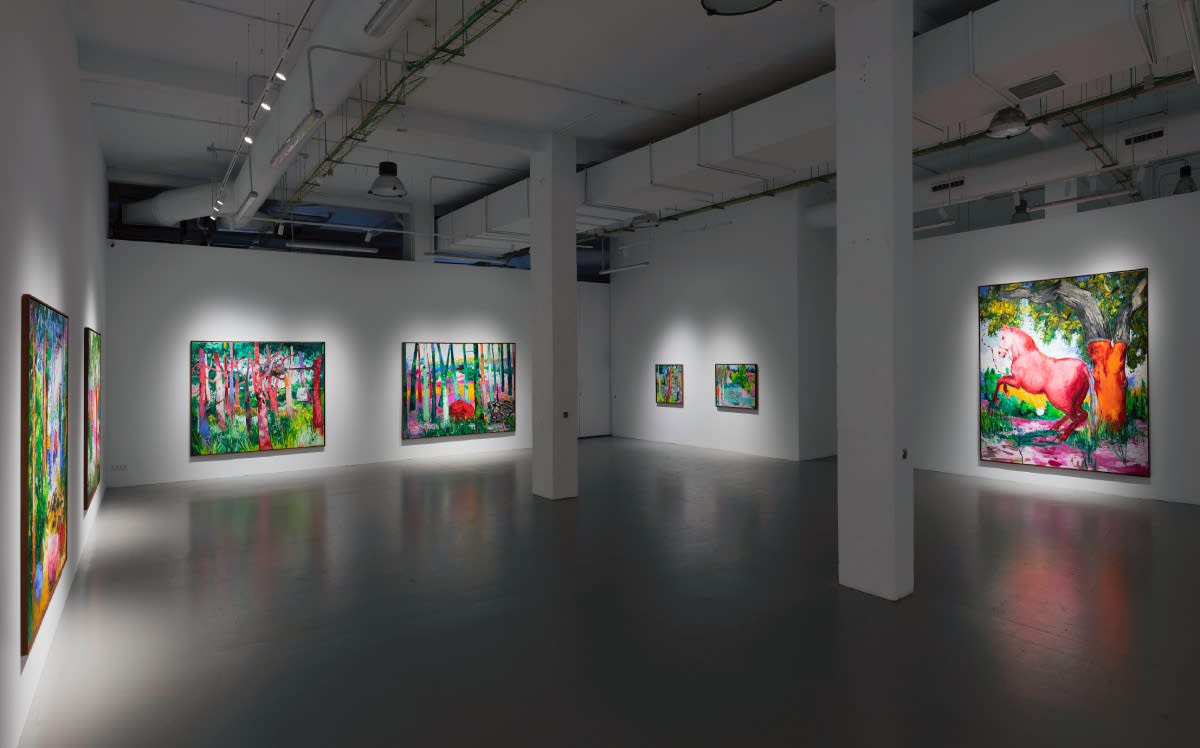Abraham Lacalle: Brilliant Pink
VETA by Fer Francés is pleased to present the third solo exhibition of one of the most outstanding figures of the Spanish contemporary art scene: Abraham Lacalle.
Naming the title of the exhibition after a color is a transversal and meta-narrative approach to the theme of the exhibition: it means choosing painting itself as the vehicle of the whole story, independently of the different elements that appear in the paintings.
Nowadays, we are involved in what Lacalle calls a "kinetic expressionism", an uninterrupted bombardment of images that does not allow anything to settle, thus generating a certain discontinuity in memory. At the same time, this endows us with a vertiginous freedom, a risky acceleration, translated into possibilities of experimentation, exaggeration and also self-destruction. Such freedom of movement is reminiscent of Phileas Fogg's unprecedented voyage around the world, but specifically of the scene where, pressed for time and lacking coal, he demolishes the additional wooden structures of the ship on which he is traveling to feed the boilers with them.
Lacalle's response to this kinetic expressionism is a pictorial resistance in the form of landscapes. Not through a figurative accommodation or a return to order, but through the exploration of the language of painting itself. Lacalle constructs a fiction through the combination of strident and non-mimetic colors, allochthonous trees and elements of dubious organicity under an uncertain light. The visitor is confronted with a series of paintings that are possible worlds, governed not by scientific rigor but by the very rules of the game of painting.
In other words, the tool employed against the hasty glut of contemporary images is the use of allegory through landscape. In painting, allegory is always, above all, a conversation with painting itself, with its codes and its clichés. It demands a decipherment that is not always easy and therefore resists the current speed of consumption of images.
Nature has been the receptacle of different discourses throughout the history of art, a reflection of order, of the hostile or the sublime. A landscape is always a construction. It needs the observer and his frame to exist. However, or Lacalle, "nature surpasses the very idea of landscape" and in this exhibition this approach can be appreciated. The landscapes we see have been explicitly intervened by human beings. Everywhere, we contemplate tied up wood, blackened remains of a bonfire, hanging clothes, cork oaks with peeled trunks, a road, electric wiring poles or the reins tied to a horse. And, although the human trace is evident, the distance that separates it from nature is suppressed because everything is ambiguous. The boundaries between the organic and the inorganic are diluted, the living becomes landscape and the inorganic looks like flesh.











